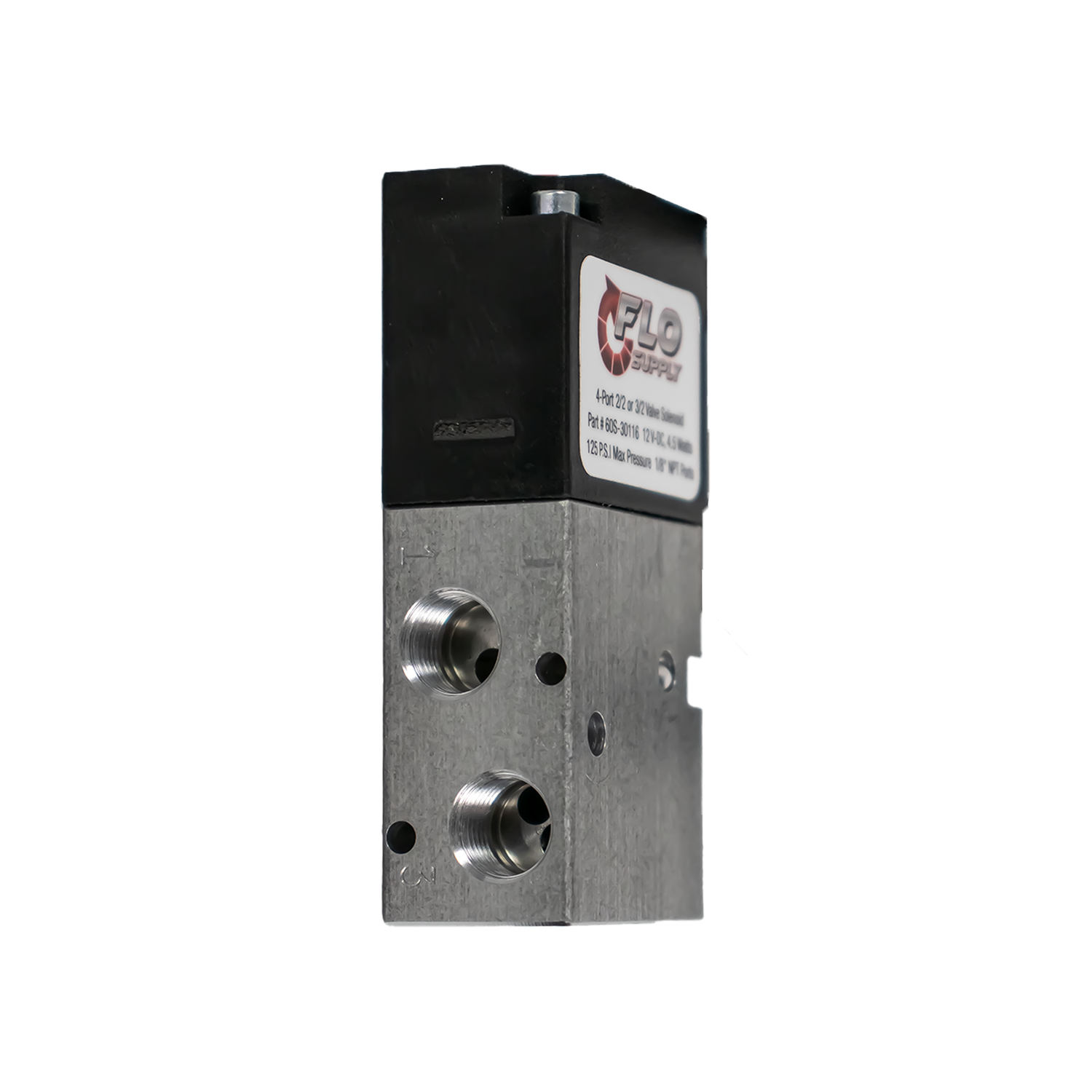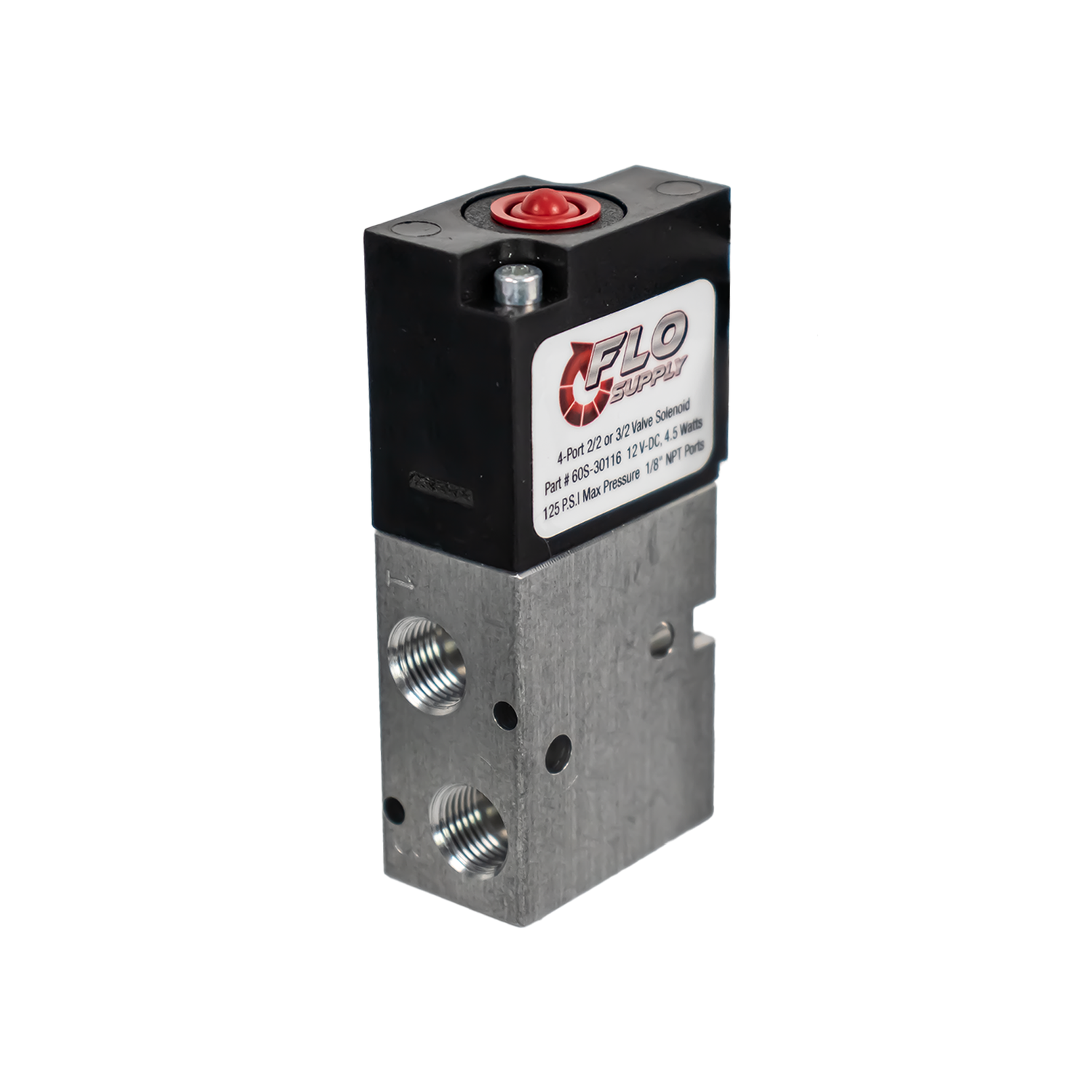Flo Supply
Flo Supply 4 Port Solenoid Valve - (2/2 or 3/2 Valve)
SKU: 60S-30116- 4-Port 2/2 or 3/2 Valve Design
- 12 V-DC, 4.5 Watts
- 125 P.S.I Max Pressure
- 1/8" NPT Ports
- Suggested for Shifter and Parachute Control
- Quick Rapid Response Design
Product Description:
The Flo Supply 4-Port Solenoid Valve is designed for precise flow control in automotive applications like Shifter and Parachute control. Featuring a 12V-DC power supply, 125 PSI max pressure, and 1/8" NPT ports, this valve ensures rapid exhaust redirection with its quick-response, pressure-sensitive mechanism. Compatible in 2/2 or 3/2 configurations, it’s ideal for systems requiring fast actuation, with quick movements. With reliable switching and precise control, this valve enhances performance in high-speed and high-pressure environments.
Solenoid Operation:
A 4 Port Solenoid Valve is typically a 2/2 or 3/2 valve designed for controlling the flow of air or fluids in pneumatic or fluid control systems, it works as follows:
-
Port 1 (Pressure or Input Port):
- This port is typically the inlet port where the pressurized fluid (usually air) is supplied to the valve. It’s where the pressure source is connected, often labeled as P (Pressure).
-
Port 2 (Output Port):
- This port is the outlet for the fluid or air to flow through when the valve is activated. This is typically connected to the actuator or downstream equipment where the controlled fluid is needed. It’s usually labeled as A (Output) in a 3/2 configuration.
-
Port 3 (Exhaust Port):
- If it’s a 3/2 valve, port 3 is the exhaust port, where the fluid or air is vented or released when not in use, or when switching between active and inactive states. This is typically labeled as B or Exhaust
Basic Function:
- In the energized state, the solenoid actuates the valve to allow fluid to flow from Port 1 to Port 2, while Port 3 is either vented or closed, depending on the valve's configuration.
- In the de-energized state, the valve may switch the flow path, directing fluid from Port 1 to Port 3 and venting or exhausting from Port 2. This valve is typically used in applications requiring reliable switching and precise control, such as controlling cylinders, actuators, or systems in industrial automation or automotive systems.
Share
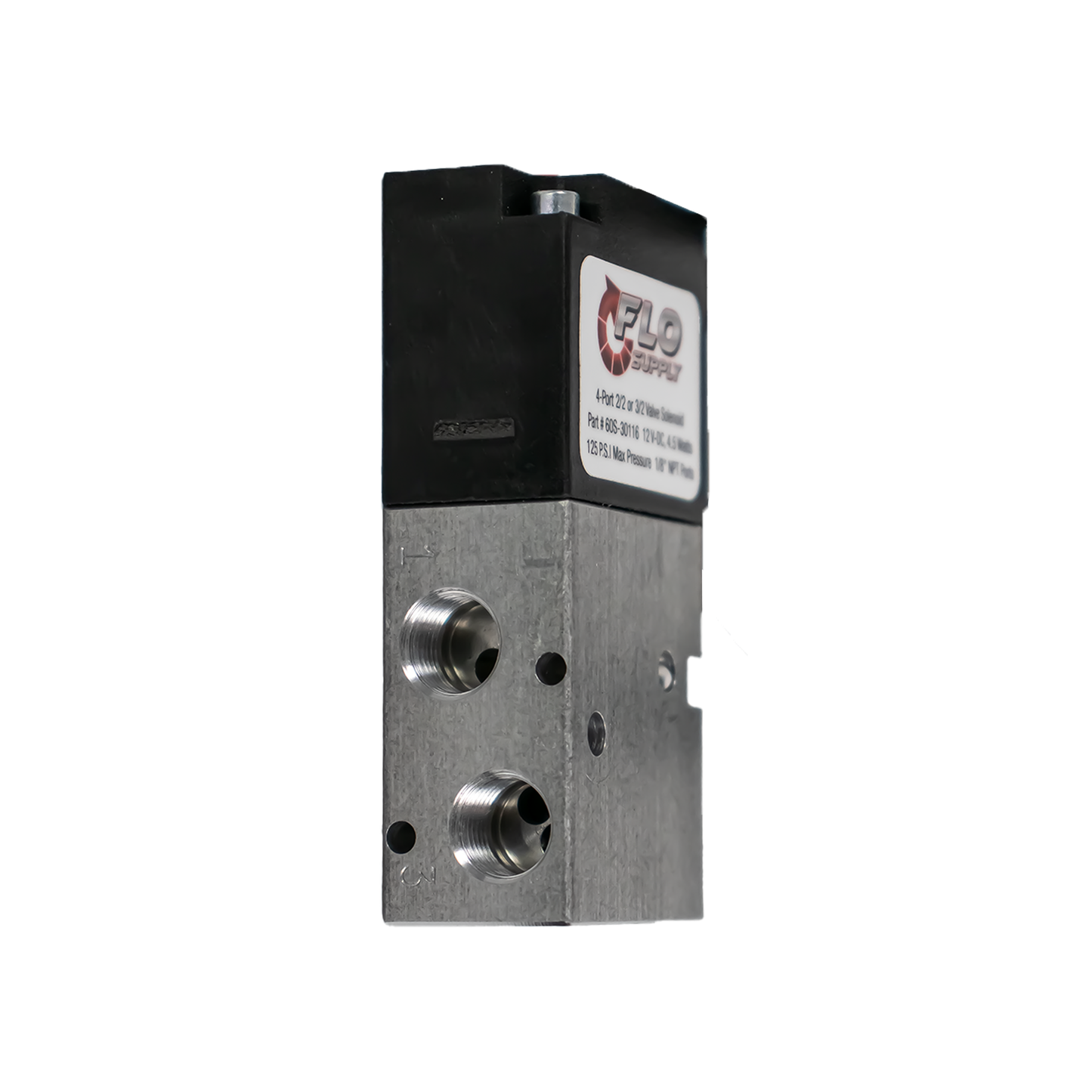
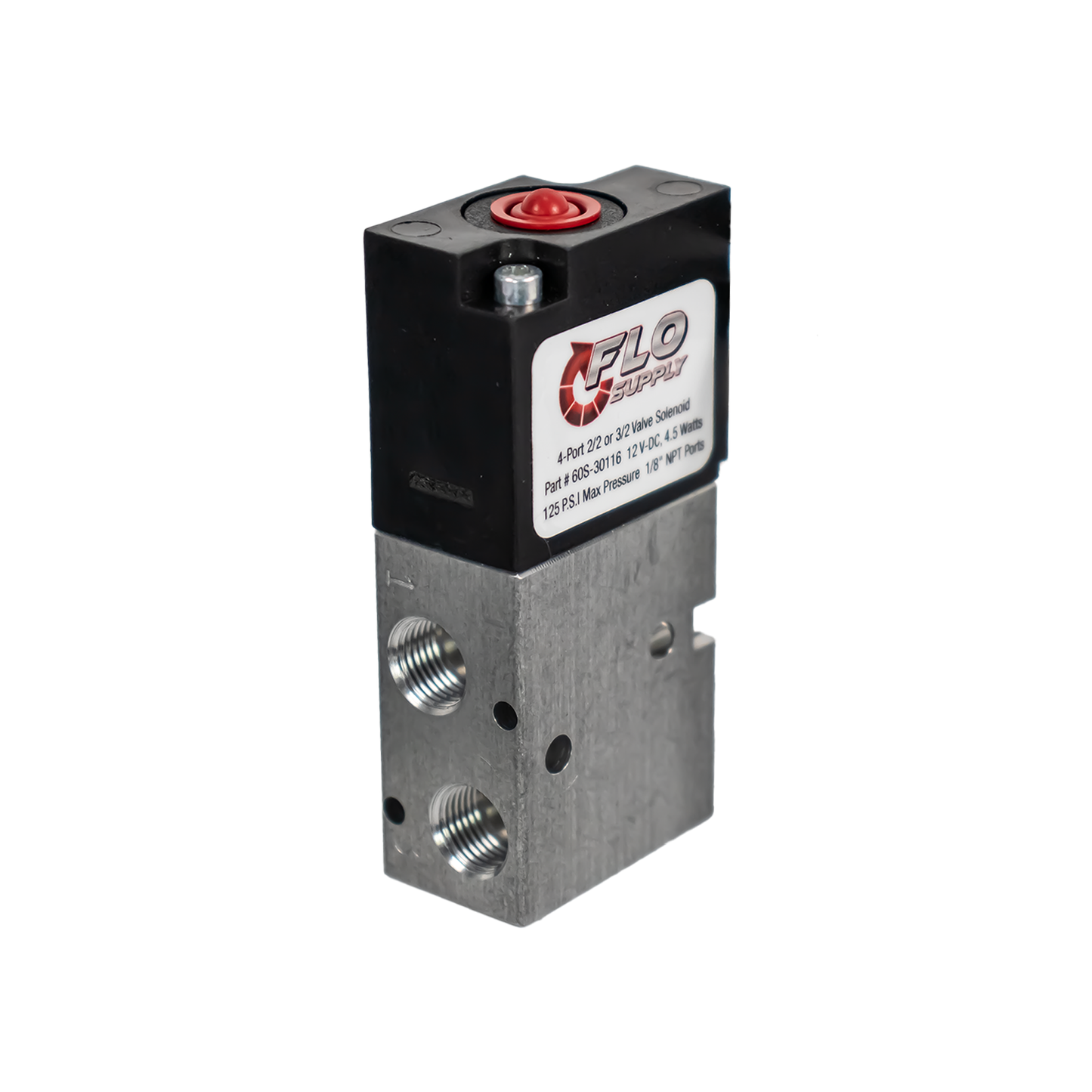
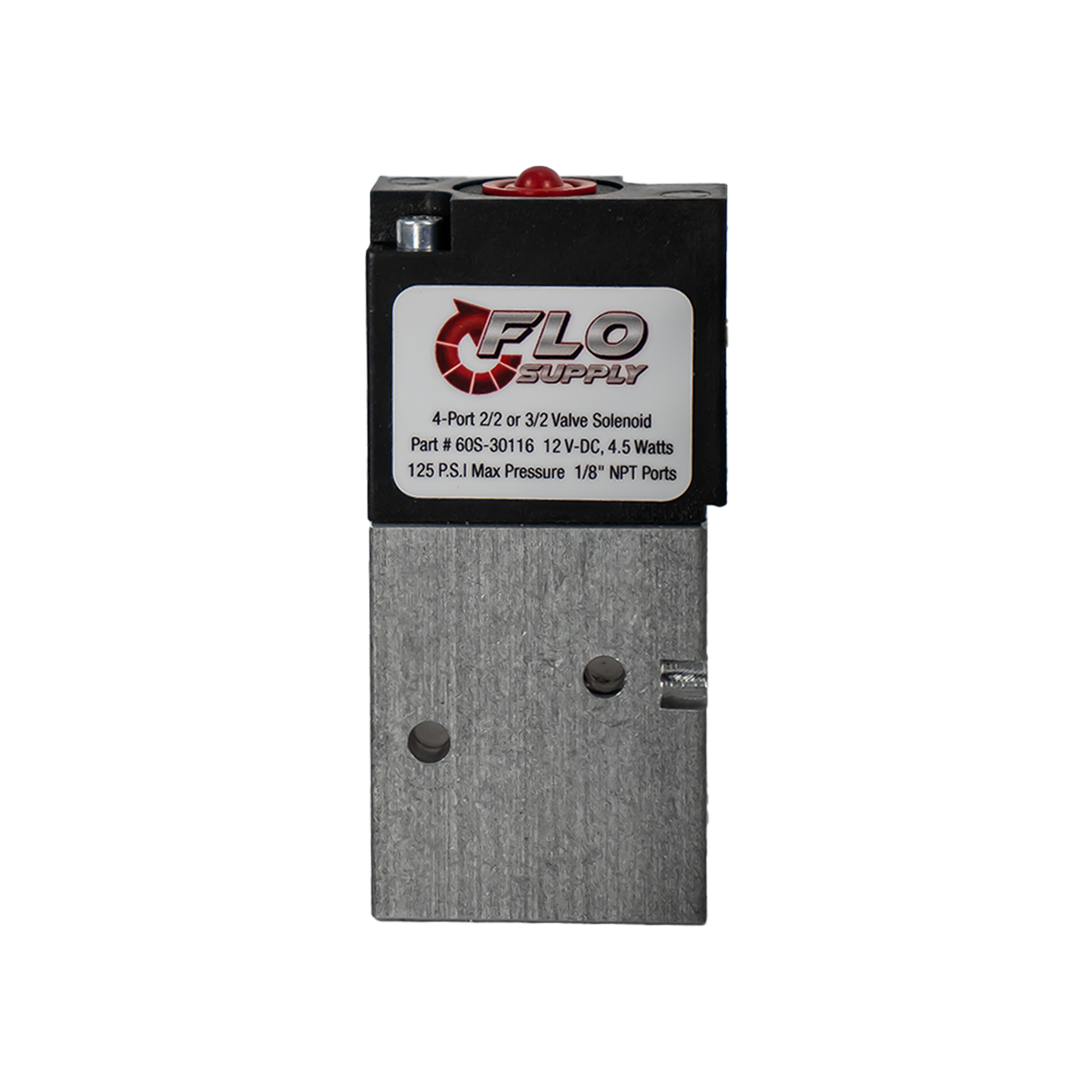
- Choosing a selection results in a full page refresh.

